By TREVOR HOGG
By TREVOR HOGG
Images courtesy of Netflix.
Unlike North America where episodes tend to be no longer than an hour, it is not uncommon in Britain to have feature-length episodes, which explains why the seasons are shorter. Season 7 of Black Mirror has six episodes with the first sequel for the Netflix anthology series that explores the dark side of technology having a run time of 90 minutes. “USS Callister: Into Infinity” comes eight years after “USS Callister” went on to win four Emmys as part of Season 4 and expands the tale where illegally constructed digital clones from human DNA struggle to survive in a multiplayer online video game environment. Returning creative talent includes filmmaker Toby Hayness, writers Charlie Brooker and William Bridges, and cast members Cristin Milioti, Jimmi Simpson, Osy Ikhile, Milanka Brooks, Paul Raymond and Jesse Plemons. Stepping into the Star Trek-meets-The Twilight Zone proceedings for the first time is VFX Supervisor James MacLachlan, who previously handled the digital augmentation for Ted Lasso.
“[For the planet where the digital clone of James Walton is found]… We got on a train and went to the middle of Anglesey [island in Wales] to a copper mine. The copper mine was absolutely stunning. … You’re a good 50 meters down, and there were little tunnels and caves where over the years things have been mined and stopped. … It was shot there, and we augmented some of it to help sell the fact that it wasn’t Earth. We put in these big beautiful arches of rock, Saturn-like planets up in the sky, a couple of moons, and clean-up of giveaways.”
—James MacLachlan, Visual Effects Supervisor
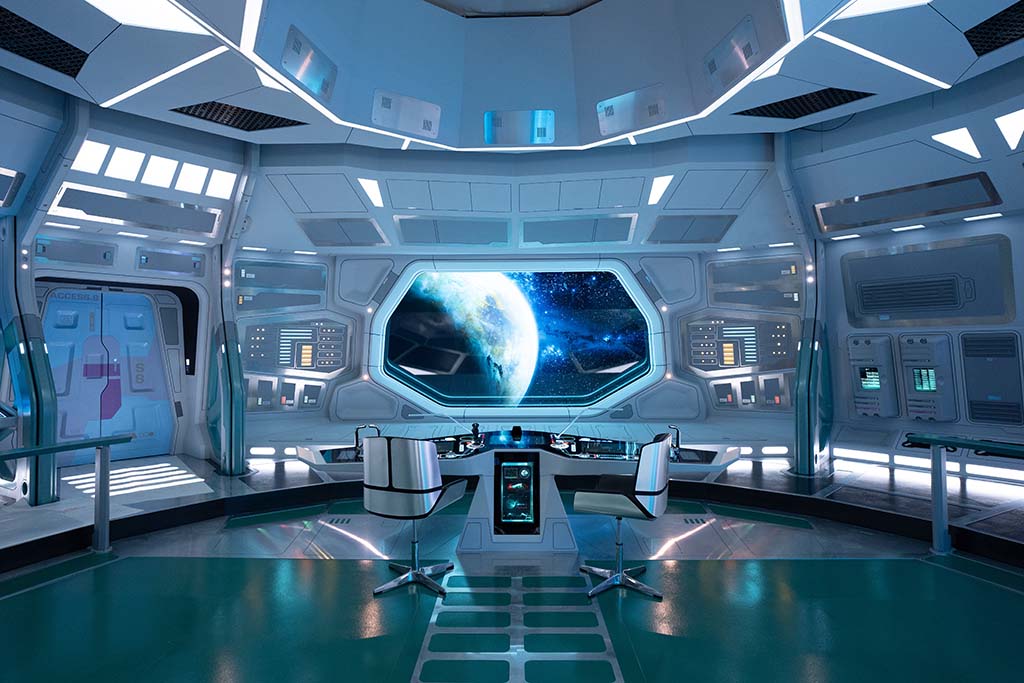
Taking advantage of the reflective quality of the bridge set was the LED wall utilized for the main viewscreen.
Dealing with a sequel to a critically-acclaimed episode was not a daunting task. “It’s almost like I have a cheat code for what we need to do, which I quite like because there’s a language from the previous show, so we have a certain number of outlines and guidelines,” MacLachlan states. “But because this was set beyond where the previous one was. it’s a different kind of aesthetic. I didn’t feel the pressure.” No assets were reused. “We were lucky that the company that previously did the USS Callister ship packaged it out neatly for us, and we were able to take that model; however, it doesn’t fit in pipelines anymore in the same way with the layering and materials. It was different visual effects vendors as well. Union VFX was smashing out all our new ships, planets and the Heart of Infinity. There was a significant number of resources put into new content.” Old props were helpful. “The Metallica ship that shows up in this episode is actually the Valdack ship turned backwards, upside down, re-textured and re-modeled off a prop I happened to wander past and saw in Charlie Brooker’s and Jessica Rhoades’ office.” MacLachlan notes.
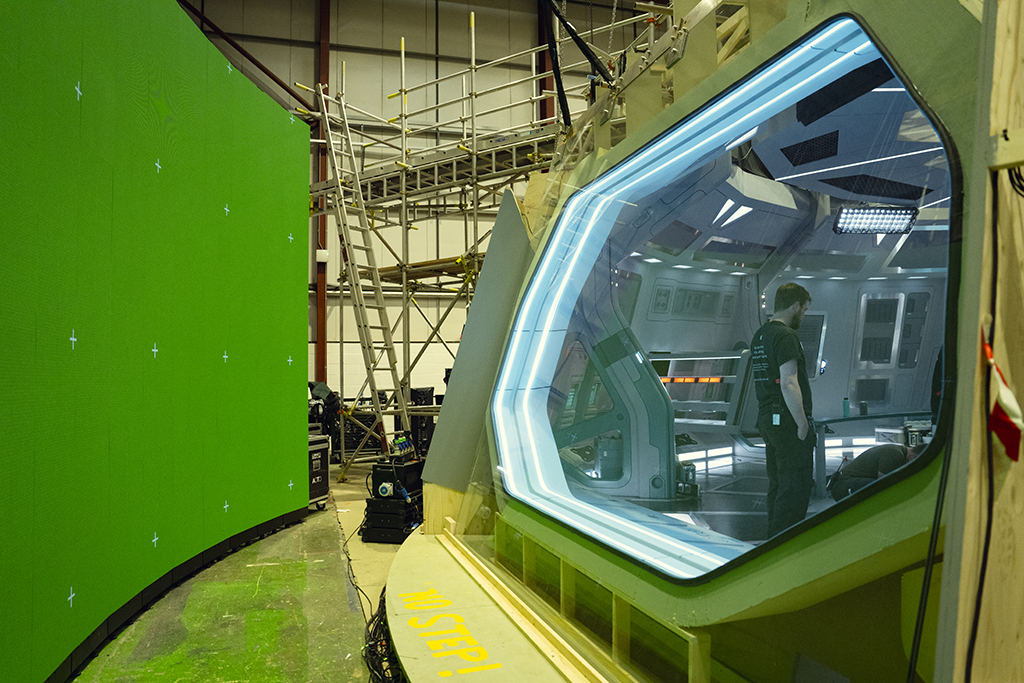
Greenscreens were placed outside of the set windows for the USS Callister.
“USS Callister: Into Infinity” required 669 visual effects shots while the other five episodes totaled 912. “Josie Henwood, the Visual Effects Producer, sat down with a calculator and did an amazing job of making sure that the budget distribution was well-weighted for each of the scripts,’ MacLachlan remarks. “We shot this one third and posted it all the way to the end, so it overlapped a lot with some of the others. It was almost an advantage because we could work out where we were at with the major numbers and balance things out. It was a huge benefit that Toby had directed ‘USS Callister’. We had conversations about how we could approach the visual effects and make sure they sat within the budget and timeframe.” Working across the series were Crafty Apes, Jam VFX, Jellyfish Pictures, Magic Lab, One of Us, Stargate Studios, Terraform Studios, Union VFX, and Bigtooth Studios. “We had a spectrum of vendors that were brilliant and weighted so Union VFX took the heavy load on ‘USS Callister: Into Infinity,’ One of Us on ‘Eulogy’ and Jam VFX on ‘Hotel Riverie’ while the other vendors were used for all the shows.”
“[W]e had a matte painter at Territory Studio create some generic space looks like exteriors of planets in pre-production. We gave those to Union VFX who animated them so the stars gently drifted and the planets would slowly rotate. Everything in that set was chrome, so no matter where the camera was pointing, when we went to hyperspace, outside planets or in space, there were all of these beautiful reflections all over the surfaces of the USS Callister. What I did not anticipate is when the actors came onto the set not knowing it was going to be a LED wall. Their reaction was enough to say that we had made the right choice.”
—James MacLachlan, Visual Effects Supervisor
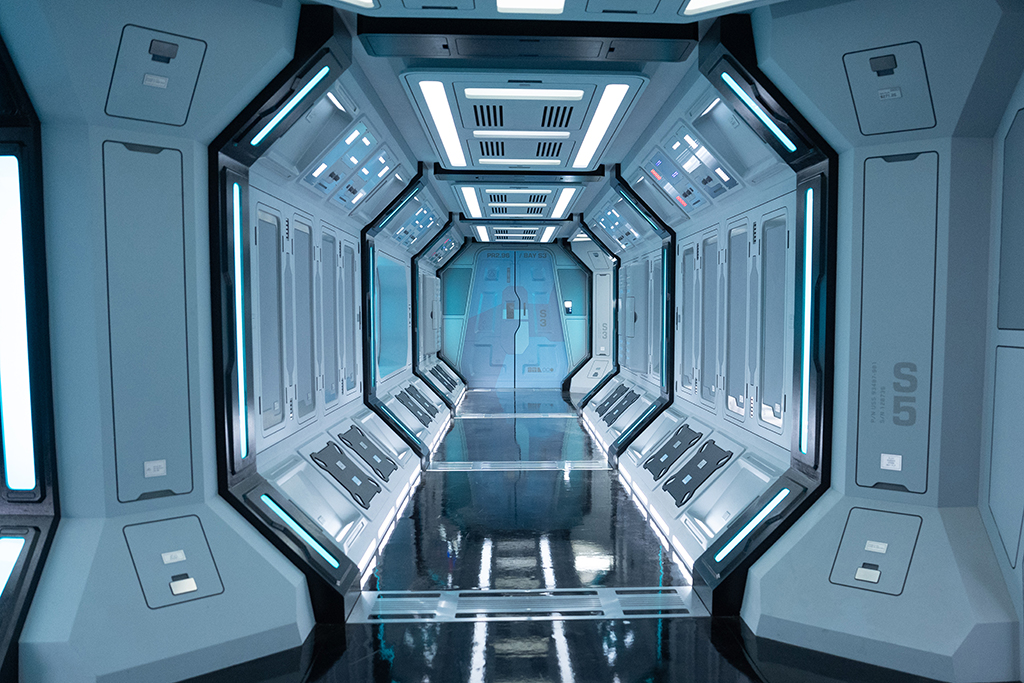
Miranda Jones looked after the production design and constructed a number of practical sets for the different sections of the USS Callister.
A clever visual effect was deployed when a digital clone of Robert Daly (Jesse Plemmons) is in his garage crafting a new world for Infinity, which transforms from a horizontal landscape into a spherical planetary form. “A lot of it was based off current UI when you use your phone and scroll,” MacLachlan remarks. “It is weighted and slows down through an exponential curve, so we tried to do that with the rotational values. We also looked at people using HoloLenses and Minority Report with those gestural moments. It has a language that a number of people are comfortable with, and we have gotten there with AR.” Union VFX spent a lot of time working on the transition. “They had three levels of detail for each of the moments. We had the mountain range and talked about the Himalayas. Union VFX had these moments where they animated between the different sizes and scales of each of these models. The final one is a wrap and reveal to the sphere, so it’s like you’re scaling down and out of the moment, then it folds out from itself. It was really nice.”
For safety reasons, weapons were digitally thrown. “We had a 3D prop printed for the shuriken and were able to get that out in front of the camera onstage,” MacLachlan explains. “Then we decided to have it stand out more, so as [the Infinity Player] throws it, it intentionally lights up. On set we couldn’t throw anything at Cristin, so some tracking markers were put on her top where it needed to land. Then we did that in CGI. When she is pulling it off her chest with her hand, the shuriken is all CGI. Because of the shape of the shuriken, we were able to have it poke through the fingers and was visible, so it worked well. Cristin did a convincing job of yanking the shuriken out. We added some blood and increased the size of the wound on her top, which we had to do for a couple of other scenes because blood goes dark when its dry, so it needed to be made redder.” Nanette Cole (Cristin Milioti) throws a ceremonial knife that hits Robert Daly directly in the head. “That was a crazy one. We had the full prop on the shelf in the beginning that she picks up and throws. The art department made a second one with a cutout section that was mounted to his head. Lucy Cain [Makeup & Hair Designer] and I constructed a cage of hair clips and wire to hold it onto his head. Beyond that, we put tracking markers on his forehead, and we were able to add all of the blood. What we didn’t want to do was have too much blood and then have to remove it later. The decision was made to do the blood in post because you don’t want to be redressing it if you’re doing two or three takes; that can take a lot of time out of production.”
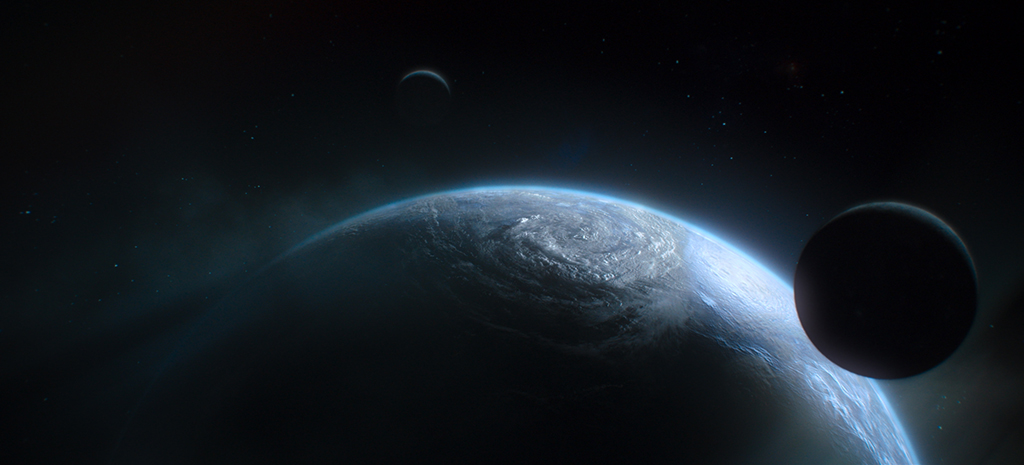
“USS Callister: Into Infinity” required 669 visual effects shots.
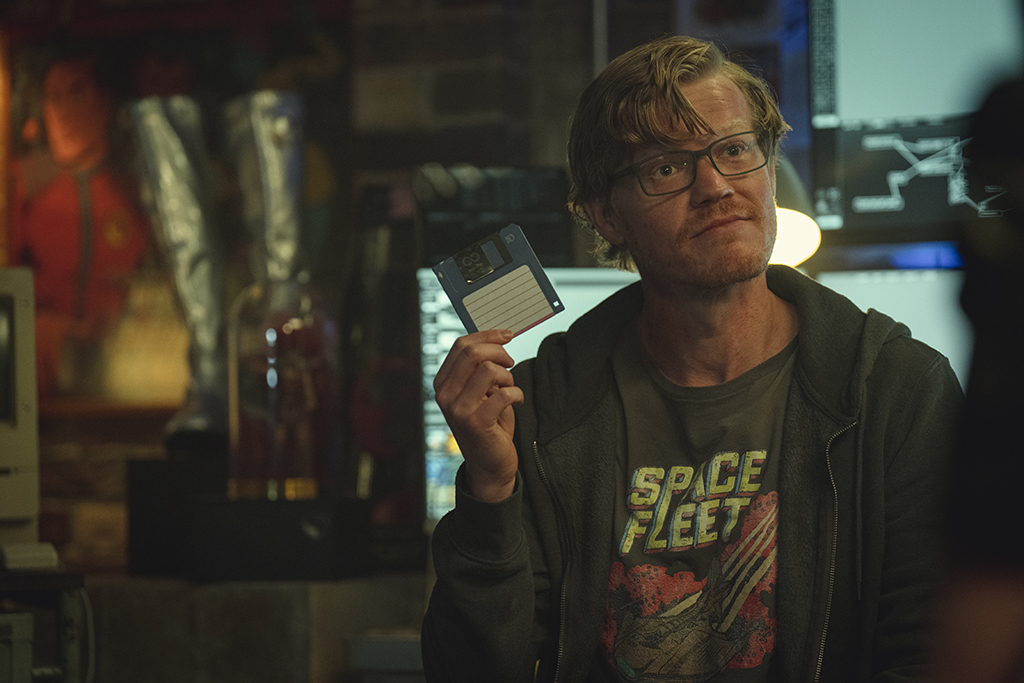
A digital clone of Robert Daly placed inside the game engine is responsible for creating the vast worlds found inside of Infinity.
“We had a 3D prop printed for the shuriken [hidden hand weapon]… Then we decided to have it stand out more, so as [the Infinity Player] throws it, it intentionally lights up. On set we couldn’t throw anything at Cristin, so some tracking markers were put on her top where it needed to land. Then we did that in CGI. When she is pulling it off her chest with her hand, the shuriken is all CGI. Because of the shape of the shuriken, we were able to have it poke through the fingers and was visible… Cristin did a convincing job of yanking the shuriken out.”
—James MacLachlan, Visual Effects Supervisor
A cross between 2001: A Space Odyssey and Cast Away is the otherworldly planet where the digital clone of James Walton (Jimmi Simpson) is found. “We got on a train and went to the middle of Anglesey [island in Wales] to a copper mine,” MacLachlan recounts. “The copper mine was absolutely stunning. It’s not as saturated. You’re a good 50 meters down, and there were little tunnels and caves where over the years things have been mined and stopped. We found moments that worked for the different areas. It was shot there, and we augmented some of it to help sell the fact that it wasn’t Earth. We put in these big beautiful arches of rock, Saturn-like planets up in the sky, a couple of moons, and clean-up of giveaways.”
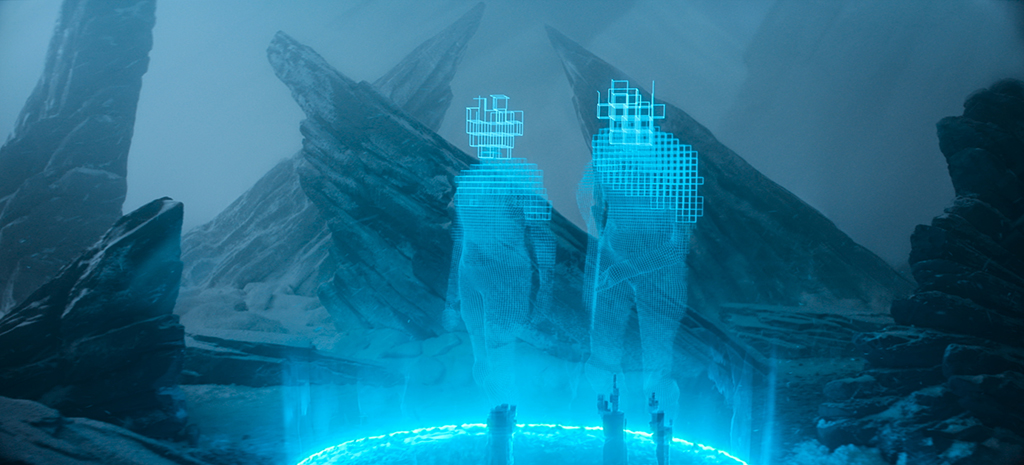
The blue teleportation ring was practically built and digitally enhanced.
Set pieces were LiDAR scanned. “What was interesting about the ice planet [was that] the art department built these amazing structures in the foreground and beyond that we had white drapes the whole way around, which fell off into darkness beautifully and naturally because of where the light was pulled by Stephan Pehrsson [Cinematographer],” MacLachlan states. “On top of that, there was the special effects department, which was wafting in a lot of atmospherics. Some of the atmospherics were in-camera and others were augmented to even it out and boost it in places to help the situation. We did add foreground snow. There is a big crane shot in the beginning where Unreal Engine assisted in generating some material. Then we did matte painting and set extensions beyond that to create a larger scale and cool rock shapes that were on an angle.” The jungle setting was an actual location. “That’s Black Park [in England], and because of the time of year, there are a lot of protected plants. We had a couple of moments where we weren’t allowed to walk in certain places. There is one big stunt where Nanette steps on a mine, and it explodes her back against a tree. That was a protected tree, so the whole thing was wrapped in this giant stunt mat while the stunt woman got thrown across it. Areas would be filled in with dressed plants to help the foreground, but we got most of the background in-camera. There were bits of clean-up where we spotted crew or trucks.”
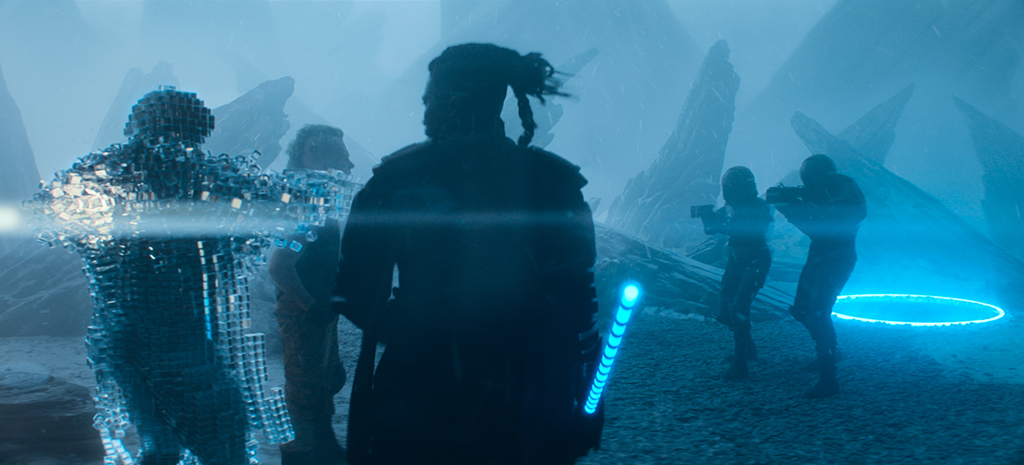
Large-scale and distinct rock shapes were placed at an angle to give the ice planet more of an alien quality.
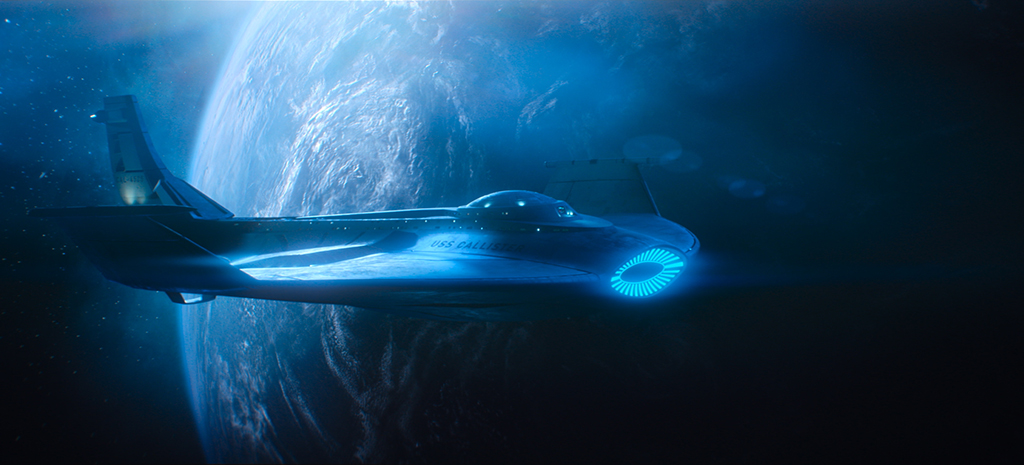
An exterior space shot of the USS Callister that is entirely CG.
Twin versions of Nanette Cole and James Walton appear within the same frame. “Literally, we used every trick in the book the whole way through. Stephan and I went to see a motion control company that had a motion control camera on a TechnoDolly. Stephan could put it on his shoulder and record a move on a 20-foot crane. Once Stephan had done that first take, he would step away, then the motion control guys would do the same move again. You get this handheld feel through motion control rather than plotting two points and having it mechanical. You get a wide of a scene of clone Nanette in a chair and real Nanette standing in white, and you’ll notice the two Waltons in the background interacting with one another. Those shots were done on this motion control rig. We had motion control where we could plot points to make it feel like a tracking dolly. Then we also had our cameraman doing handheld moves pushing in and repeating himself. We had a wonderful double for Cristin who was excellent at mirroring what she was achieving, and they would switch and swap. You would have a shoulder or hair in the foreground in front of you, but then we would also stitch plates together that were handheld.”
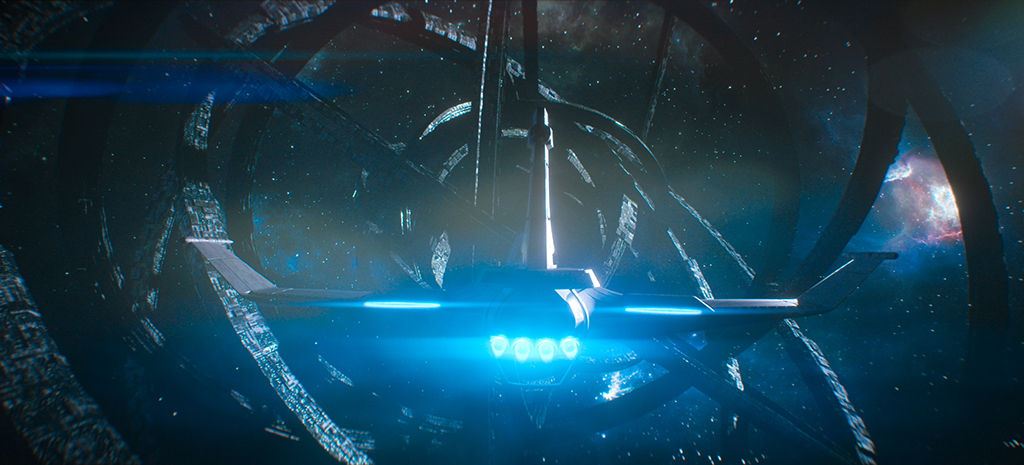
The USS Callister approaches the game engine situated at the Heart of Infinity.
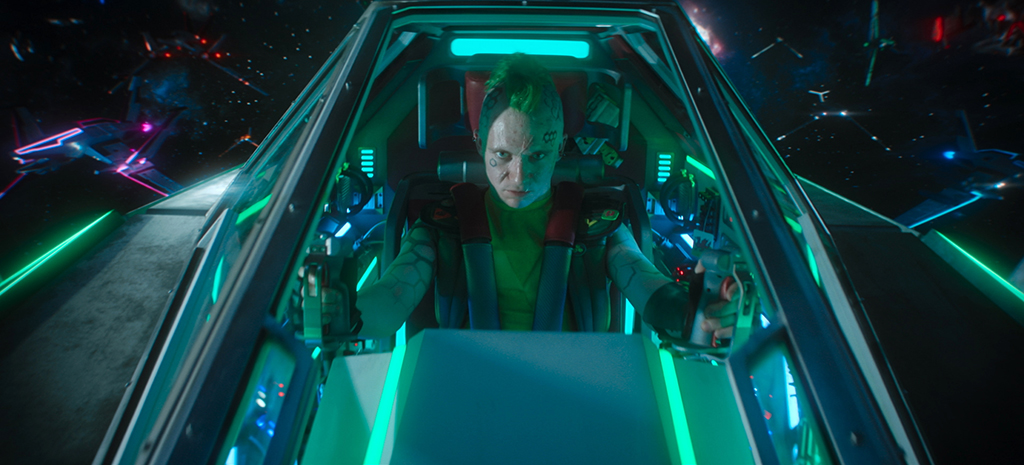
A homage to the fighter cockpit shots featured in the Star Wars franchise.
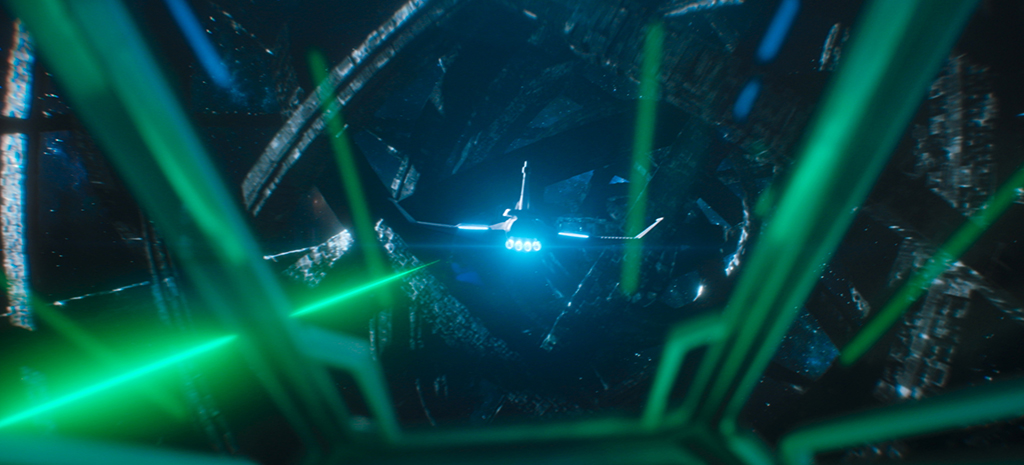
USS Callister flies into the game engine while pursued by other Infinity players.
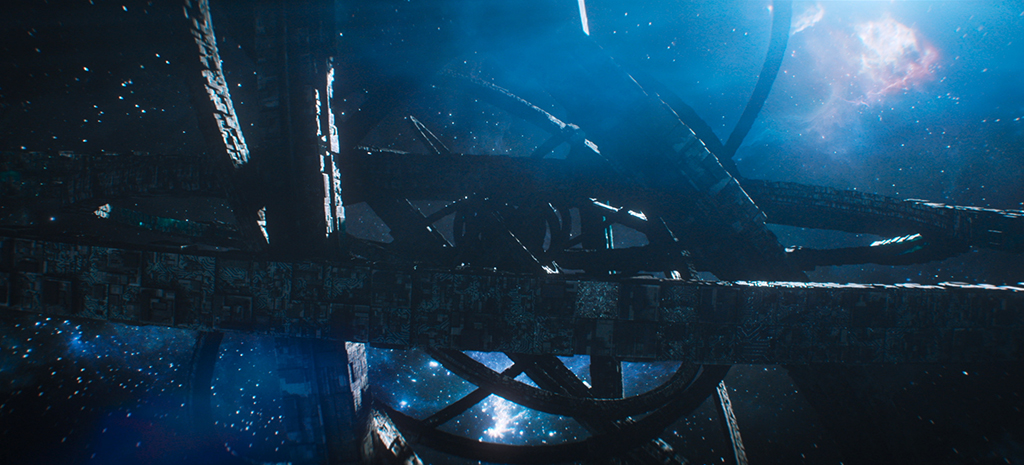
A major story point is that the game engine is made to look complex but is in fact a façade.
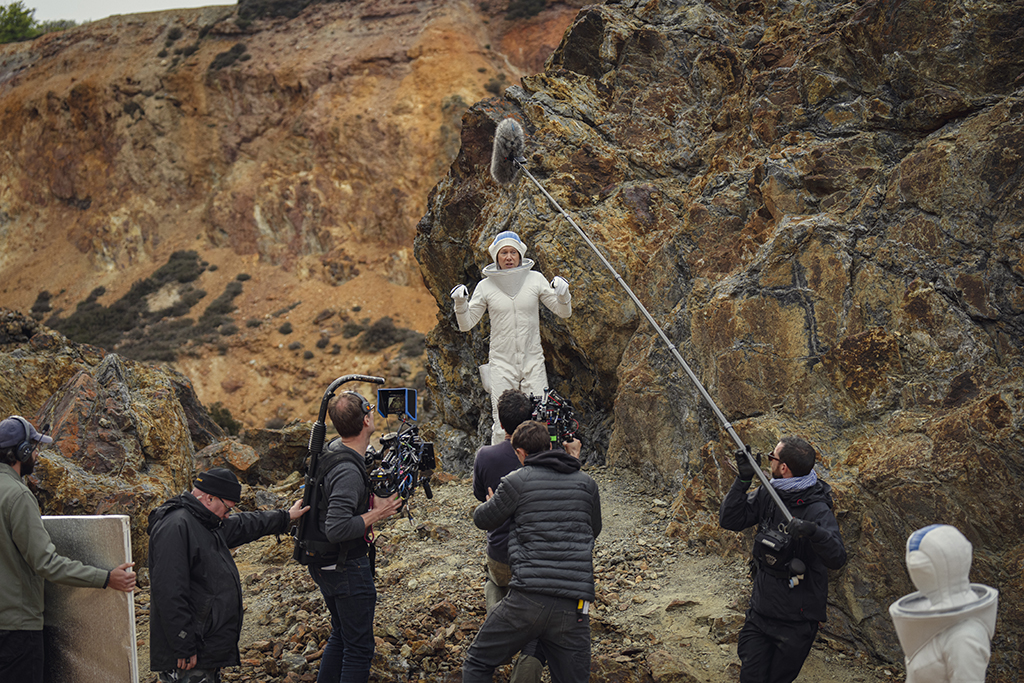
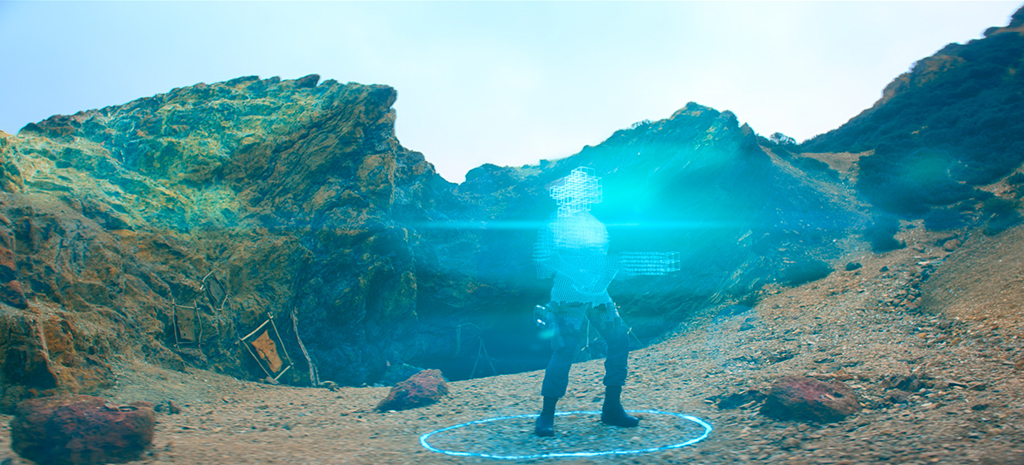
A copper mine served as the location for the planet where the digital clone of James Walton (Jimmi Simpson) is found.

Principal photography for the jungle planet took place at Black Park in England.
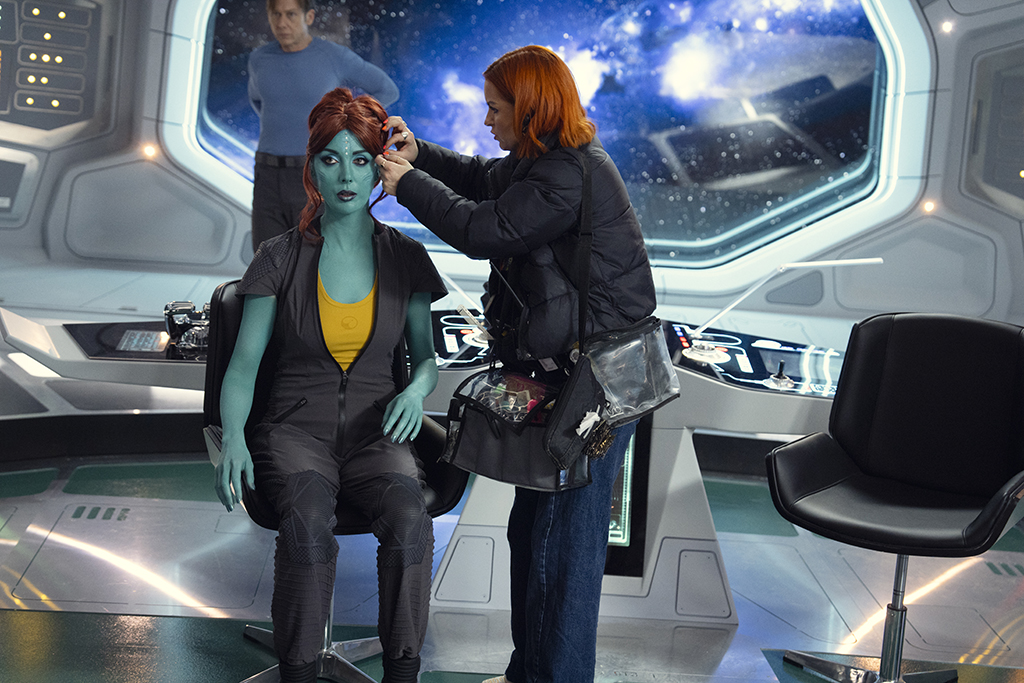
The blue skin of Elena Tulaska (Milanka Brooks) was achieved with practical makeup.
Assisting the lighting were some cool tools such as the teleportation ring. “We had this beautiful two-meter blue ring that we were able to put on the ground and light up as people step into it,” MacLachlan remarks. “You get these lovely reflections on their visors, helmets and kits. Then we augmented the blue ring in visual effects where it was replaced with more refined edging and lighting effects that stream up from it, which assisted with the integration with the teleportation effect because of their blue cyan tones.” Virtual production was utilized for the main viewscreen located on the bridge of the USS Callister. “In terms of reflections, the biggest boon for us in visual effects was the LED wall. The last time they did the big screen in the USS Callister was a greenscreen. We got a small version of a LED screen when the set was being built and did some tests. Then we had a matte painter at Territory Studio create some generic space looks like exteriors of planets in pre-production. We gave those to Union VFX who animated them so the stars gently drifted and the planets would slowly rotate. Everything in that set was chrome, so no matter where the camera was pointing, when we went to hyperspace or outside planets or in space, there were all of these beautiful reflections all over the surfaces of the USS Callister. What I did not anticipate is when the actors came onto the set not knowing it was going to be a LED wall. Their reaction was enough to say that we had made the right choice.”
Watch a featurette on Black Mirror’s “USS Callister” and “USS Callister: Into Infinity” episodes with the show’s architects discussing what inspired the episodes’ look and feel with VFX and sound editing. Click here: https://www.youtube.com/watch?v=dYINrxVjpt4.